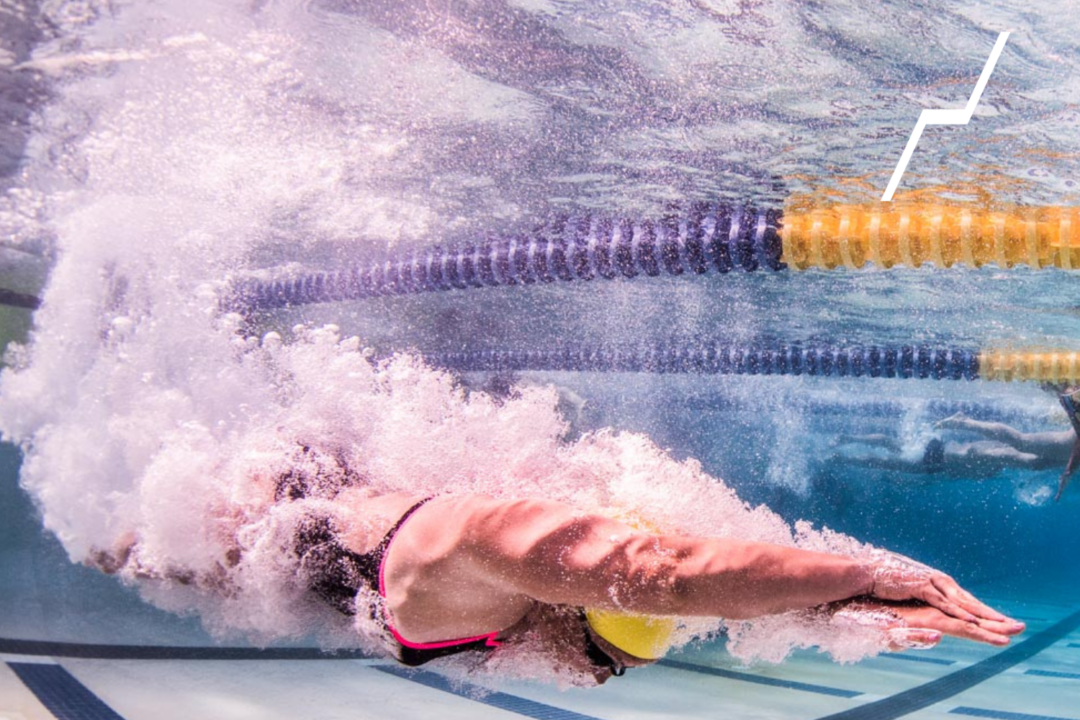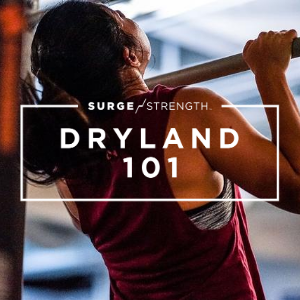The Importance of the Streamline
The streamline position is arguably the most important movement a swimmer makes, so it’s easy to understand the need to learn dryland drills that can improve a swimmer’s streamline. The very first position a swimmer hits off the blocks is a streamline, and every time the swimmer pushes off the wall, they rely on the streamline position. With races easily being won off the walls, a great streamline can make the difference. Regardless of the stroke, underwater streamlines are critical to performance. Yet, streamlines are often overlooked by both swimmers and coaches after the initial “teaching” that our littlest swimmers learn. Think of how many times swimmers hit a streamline in practice alone. In contrast, how often are they really thinking about it? By drilling an optimal streamline position on land, swimmers develop body awareness to naturally apply it to their stroke.
Streamline Drill
It’s hard for the coach to see a swimmer’s streamline underwater. It’s also hard for the swimmer to know what their body is doing in this position. This is why we have a specific assessment for the streamline in SURGE Strength Dryland Certification.
First, have your swimmer lay on their back with their knees up. Bring their arms into a streamline position and see if they can keep their lower back on the floor. They should feel their core firing to hold this position. Once they have the core strength and shoulder mobility to achieve this, ask them to extend their legs. Next, progress by repeating the drill against a wall. Focus on keeping the low back flat to the wall. Bring the feet away from the wall if needed. Practice the best progression for your team based on each athlete’s ability. Swimmers should memorize this streamline position on land. Then, as the saying goes, just add water. Watch below to see part of this assessment from the SURGE Strength Dryland Certification Curriculum:
Best Dryland Exercises for Better Swim Positions
In addition to these drills, there are many other ways to improve a swimmer’s body position through dryland work. The streamline is heavily influenced by movement at the hips, shoulders, and core. A good dryland program will have exercises addressing both strength and mobility in these areas. Keep in mind that dryland programs should not attempt to mimic swimming on land. Instead, progress simple resistance training movements. The benefits of lifting will transfer to the water.
Shoulder Mobility Exercises to Improve a Swimmer’s Streamline
Lack of adequate shoulder mobility is a super common hindrance to maintaining a great streamline. Have you ever asked your swimmers to lift their arms over their head without moving the rest of their body? If they can’t do this, focus on shoulder mobility. When the shoulders are restricted, the rest of the body will move out of line to compensate. Typically, coaches will see ribs flaring or backs arching when swimmers reach up. To fix this, implement shoulder strengthening exercises into your dryland program. This includes moving the shoulder in all planes and directions. Focus specifically on strengthening and mobilizing the rotator cuff muscles. This includes actions such as internal and external rotation, and abduction. Corrective exercises counterbalance repetitive overhead movements in swimming. In turn, swimmers will have a longer reach in the streamline position without compensation. They are also less likely to suffer from shoulder injuries. Most of all, shoulder mobility improves a swimmers’ potential, and increases their longevity in the sport.
Core Exercises to Improve a Swimmer’s Streamline
The streamline position is so important because it sets up the athlete to properly engage their core. In order to hit a tight streamline, the core draws the rib cage down as the arms open overhead. The core is the reason why we progress the drill described above. Otherwise, our swimmers would just hang out in dryland with their arms overhead.
There are many ways to strengthen the core. First, coaches need to know that the core consists of the entire trunk including the hips and back. Core work must consist of more than just “abs.” Focus on strengthening the posterior chain as well as the deep core muscles. Proper bracing takes priority over repetitive core movement. A proper brace creates the tension needed to move well. In addition, the brace transfers force through the extremities. To learn more about core bracing, check out our video from the SURGE Strength Dryland Certification Curriculum.
Hinge & Squat Exercises to Improve a Swimmer’s Streamline
When swimmers are in a streamline, they are either kicking or pushing off of the wall. This requires a significant amount of lower body strength and power. To generate this, swimmers develop strong and powerful hips. Train this in dryland. Program hinges and squats into your program. Hinges focus on building strength from the hip joint. They build hamstring and glute strength. Squats focus on building strength from the knee joint. This increases strength and power in the quads and glutes. Together, squats and hinges build hip drive for starts, turns, and the kick. Both are also important for a functional streamline. The SURGE Strength Dryland Certification Curriculum recommends having both double and single-leg variations of hinges and squats. With these movements, swimmers maximize their athleticism in the streamline position.
There are many ways to incorporate exercises for the streamline into a dryland plan. Perform the drill described above with your athletes often to both improve streamlines but also to keep the importance top of mind for your swimmers. Refresh them on how a streamline should feel while they have feedback from the wall and floor. Take the variable of water out of the equation and develop their body awareness on land. Then, focus on strengthening the streamline with resistance training. The benefits of hinges, squats, bracing, and shoulder mobility all translate to swimming. Resistance training turns a streamline position into a functional movement. With this one drill and a dryland program that includes these simple exercises, we guarantee your swimmers will hit better streamlines both in practice and during a race.
ENROLL NOW FOR FREE IN THE SURGE STRENGTH ACADEMY
BECOME SURGE STRENGTH DRYLAND CERTIFIED (SSDC)
BUILD BETTER ATHLETES TO GENERATE FASTER SWIMMERS
Courtesy of SwimSwam’s exclusive dryland training partner, SURGE Strength.
SURGE Strength, a strength training brand created by Chris Ritter, CEO of RITTER Sports Performance, aims to build better athletes and faster swimmers through dryland programs, and coaching education.







